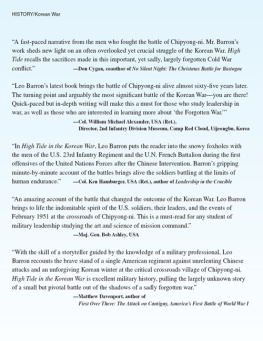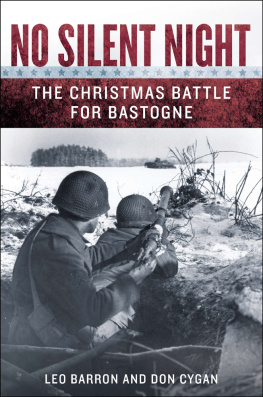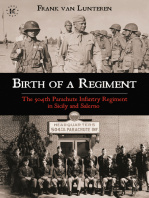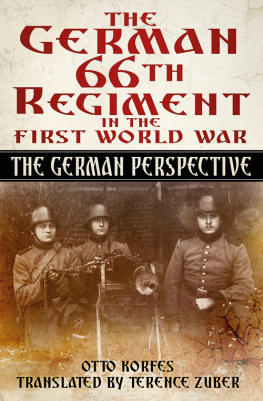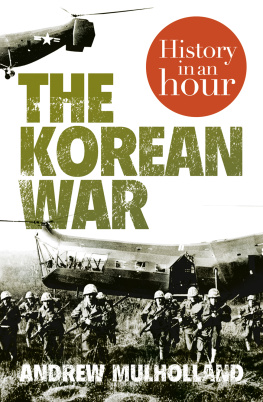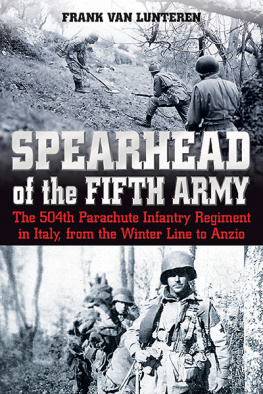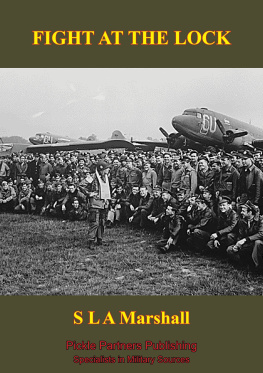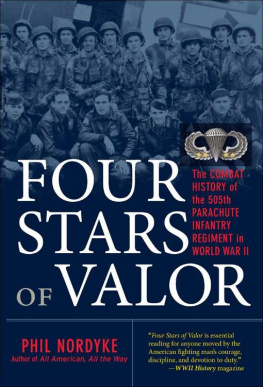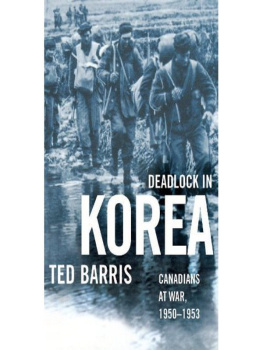ACKNOWLEDGMENTS
L ike each of my past endeavors, this book was not the work of one man. I had a great deal of help along the way. First, I would like to thank the veterans whom I interviewed for this book: Earl Becker, James Bolen, Donald Byers, George Collingsworth, Doyle Cox, Leo Dobbs, Joe Halbrook, James Henkel, John Kamperschroer, Grant Mead, Glen Medieros, William Tuttle, and John Wilson. In addition, I would like to extend a special thank you to Harley Wilburn, his son Steven, and Martin Lee, who provided photos for the book. Most of all, I would like to thank veteran Jim Coulos, secretary of the 23rd Infantry Regiment Association; without his help, I would not have been able to contact all the other Tomahawk veterans for this book.
Next, I would like to extend my gratitude to the people who helped me plan and guide my trip to South Korea. First is Won Pak, also a Korean War veteran. Mr. Pak organized my trip, putting me in contact with several people who were instrumental in my tour of the various battlefields. These included Seoung Jeoung Lee Cathy, my tour guide and interpreter for the trip to Chipyong-ni, Col. Bill Jong-Hwan Lee, who offered wonderful hospitality and stories, and Col. William Alexander, Ret., who gave me a personal tour of the 2nd Infantry Division Museum and answered several questions about key figures in the battle.
Furthermore, I would like to acknowledge the following individuals who helped me with my research into the battles of Chipyong-ni and the Twin Tunnels: Jo Tison-Chizmar at Real War Photos, for providing me with some great photos of the battle and the Korean War; Scott Cross at the Oshkosh Public Museum for sending the Herb Ziebell letters to me; Kingston Montgomery Winget for providing photos from his father's collection; and Donald Fair and Lucy Chubb at the U.S. Army Heritage and Education Center for sending me photos from the U.S. Army Signal Corps collection.
In terms of research assistance, my biggest contributors were brothers Hal and Ted Barker, and Col. Kenneth Hamburger, Ret. Hal and Ted Barker are the founders of Korean War Project, an amazing website that is a treasure-trove of primary source material on the Korean War, specifically the 2nd Infantry Division. After I asked, they posted all the general orders from the 2nd Infantry Division online; these orders have all the award citations for the 2nd Infantry Division, and while searching through all of them, I discovered numerous award descriptions that became incredible additions to the book.
Col. Kenneth Hamburger wrote the book Leadership in the Crucible: The Korean War Battles of Twin Tunnels and Chipyong-ni, which served as the starting point for my study of the battles. When I asked him what he did with all the research, he told me he still had it and was willing to give it to me, provided I donated it after I was done. It was a mountain of material, source of approximately 60 percent of my research in the end. Without it, this book would have never happened. Thank you.
I would like to recognize my two agents: George Bick, and my new agent and George's former boss, Doug Grad. Gentlemen, thank you again for representing me. I also would like to thank my editor, Dave Reisch, at Stackpole Books. Thank you for taking a chance on my manuscript. The Korean War deserves a lot more attention, and you have ensured that it will not remain the Forgotten War for long.
Alas, I would be remiss if I did not mention my good friend Stanley Choy, who helped me translate several items from Korean into English. Lastly, I would like to thank my lovely wife. Without her, I would not have been able to write anything. She is my motivator and my voice of reason.
Discover more History books, eBooks, and drama from the front lines!
From Gettysburg to D-Day to Iraq, muskets to panzers, foxholes to headquarters -- real battles, real soldiers, real stories come alive in Stackpole's History titles.
Visit
Stackpole Books History webpage
BIBLIOGRAPHY
BOOKS AND ARTICLES
Appleman, Roy E. Disaster in Korea. College Station: Texas A&M University Military History Series, 1989.
Blumenson, Martin. The Controversial Task Force Crombez. AUSA, August 2002, www.ausa.org/publications/armymagazine/archive/2002/8/Documents/Blumenson_0802.pdf (accessed February 12, 2015).
Bowers, William T., ed. The Line: Combat in Korea, JanuaryFebruary 1951. Lexington: University Press of Kentucky, 2008.
Coleman, J. D. Wonju: The Gettysburg of the Korean War. Washington, D.C.: Brassey's Publishing, 2000.
Collins, John. Flying Story Number 62; Diary of a Mosquito. Atlantic Flyer, September 1991: A9.
. Mosquito Spirit Leads Operation Punch through Dark Days. Kenneth Hamburger Collection. Atlantic Flyer, March 1988: A5.
Curtis, Robert W. Chipyong-yi. In Staff Ride Read Ahead Packet, Battle of Chipyong-ni, 1315 February 1951, by U.S. Eighth Army Staff. Seoul: 2nd Infantry Division, 1990.
Dehuai, Peng. Chapter XIV: The War to Resist U.S. Aggression and Aid KoreaOctober 1950July 1953. In Memoirs of a Chinese Marshal, edited by Sara Grimes, March 17, 2005, www.paulnoll.com/Korea/War/war-Peng-Dehuai-book-07.html (accessed January 18, 2015).
Edwards, James W. The Siege of Chipyong-ni. In Staff Ride Read Ahead Packet, Battle of Chipyong-ni, 1315 February 1951, by U.S. Eighth Army Staff. Seoul: 2nd Infantry Division, 1990.
Gaston Gazette. Obituary for Paul J. McGee. May 13, 2009, www.legacy.com/obituaries/gastongazette/obituary.aspx?n=paul-mcgee&pid=127227102& (accessed January 2015, 2015).
Graney, Douglas. Cottonseed Easy Six. Denver: Outskirts Press, Inc., 2010.
Gugeler, Russell A. Combat Actions in Korea. Washington, D.C.: Center of Military History, 1987.
Hamburger, Kenneth E. Leadership in the Crucible: The Korean War Battles of Twin Tunnels and Chipyong-ni. College Station: Texas A&M University Press, 2003.
Leary, Alex. Gunning for Home. St. Petersburg Times, July 20, 2003, www.sptimes.com/2003/07/20/Korea/Gunning_for_home.shtml (accessed February 16, 2015).
Martin, Harold R. The Two Terrible Nights of the 23rd. Saturday Evening Post, May 19, 1951: 15359.
McMichael, Scott R. A Historical Perspective on Light Infantry. Fort Leavenworth, KS: Combat Studies Institute, 1987.
Millett, Allan R. The War for Korea, 19501951: They Came from the North. Lawrence: University of Kansas Press, 2010.
ONeill, Mark. Kim Il-Sung's Secret History. South China Morning Post, October 17, 2010.
Pratt, Sherman W. Decisive Battles of the Korean War: An Infantry Company Commander's View of the War's Most Critical Engagements. New York: Vantage Press, 1992.
Ridgway, Matthew B. The Korean War. New York: De Capo Press, 1967.
Sawyer, Robert K. Military Advisors in Korea: KMAG in Peace and War. Washington, D.C.: Center of Military History, 1988.
Schudel, Matt. Sherman W. Pratt, Army officer and lawyer. Washington Post, October 14, 2013, www.washingtonpost.com/local/obituaries/sherman-w-pratt-army-officer-and-lawyer/2013/10/14/e4b34cee-31e3-11e3-8627-c5d7de0a046b_story.html (accessed January 24, 2015).
Slate, Scott. Chipyong-ni high-water mark of the Korean War. Indianhead, www.2id.korea.army.mil/news/Indianhead, August 1, 2005: 9.
Stackhouse, Glenn A. They Stood and Fired: Brothers in 37 Survivors of 600-Man Red Trap. Knickerbocker News, January 30, 1952: 2A.
Stokesbury, James L. A Short History of the Korean War

